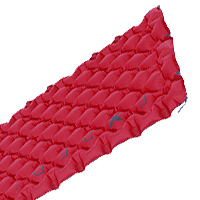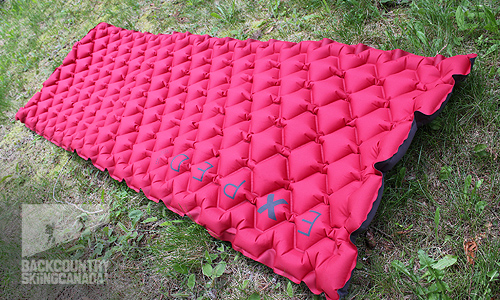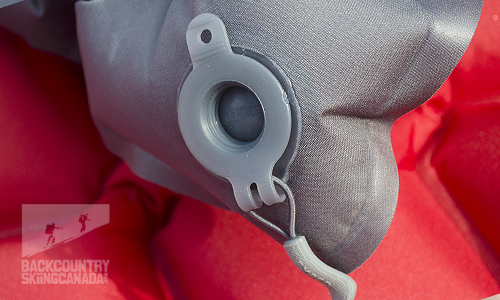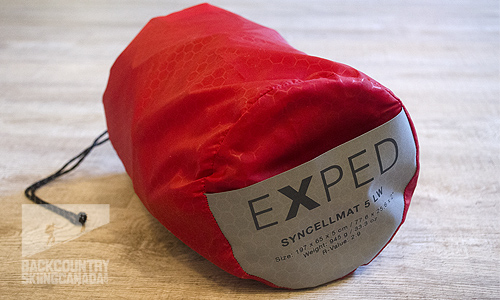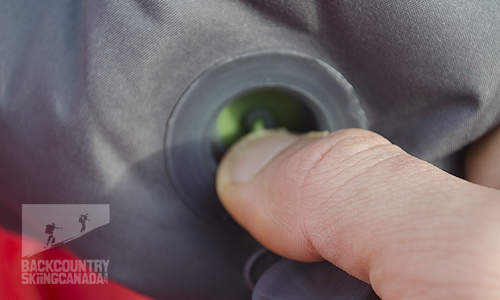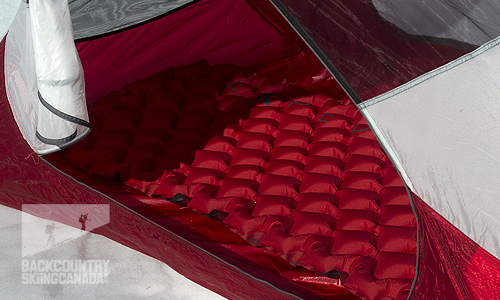


SITE LOGIN
-
REVIEWS
- Ski Gear
- Clothing
- Accessories
- Summer Gear
- Lifestyle
- Lodges and Accommodation
- Nutrition
- Manufacturers
- Destinations
- Training
- Gear of the Year
- Best New Summer Gear
- Holiday Gift Guide
- Pro Skier Interviews
-
Past Holiday Gift Guides
-
Holiday Gift Guide 2024
- Holiday Gift Guide 2024 Base Layers
- MSR Explore Revo Snowshoes
- Fieldsheer Backcountry Heated Jacket
- Fieldsheer Premium 2.0 Merino Heated Socks
- MEC Hut Booties and Slippers
- Arc’teryx Kopec GTX Shoe
- Arc’teryx Kragg Insulated Approach Shoes
- Gregory Verte 18 Backpack
- Grundens Deck-Boss Ankle Boot
- MEC Northern Light Vest
- Montec-Scope-Ski-Goggles
- Mountain Hardware Kor Airshell Hoody
- Mountain Hardware Kor Alloy Crew
- Arcade Atlas Belt
- Dynafit Ridge Dynastretch Jacket
- Shokz OpenRun Pro 2 headphones
- Buff Merino Move Multifunctional Neckwear
- Bootdoc Foot Warmer
- Cotopaxi Allpa 42L Travel Pack
- DPS LastBag
- DPS PHANTOM Glide At-Home Kit
- DPS Mission Quiver Roller
- Dragon Amped sunglasses
- Dragon DX3 Plus OTG photochromic goggle
- Fuse Lenses Anclote Flashback
- Garmin Fenix 8 Solar Sapphire Watch
- Gregory Alpaca Gear Tote 30
- Hotronic Boot Dryer
- MEC Aluminum Pot Set
- Gnara Go There Pants
- Grundens Shackleton 2.0 Duffel
- Jones Deeper 19L Backpack
- Le Bent Core Midweight Crew base layer
- Leatherman ARC
- Montane Nordes Hooded Softshell Jacket and Pants
- Helly Hansen Odin Everdown Hooded Jacket
- Helly Hansen Verglas Infinity Shell Jacket 2.0
- Montec Fawk Ski Jacket
- Pomoca Free Pro 2.0 Skins
- Rab Glaceon Pro Down Jacket
- Rab Khroma Converge GORE-TEX Ski Jacket & Pants
- Smith Squad MAG Goggles
- Stellar Guide Aerogel Hybrid Hood 2.0
- Stellar Ultralight Down Hood 2.0
- Arms of Andes Alpaca Half Zip & Wool Leggings
- Cotopaxi Allpa 70L Duffel Bag
- Giro Taggert Mips Helmet
- Loonr Hi Flyer Boots
- Paka Mountain Crew
- Roll Recovery SUPERPLUSH Classic Shoes
- Smartwool Smartloft Hooded Jacket and Pants
- Ortovox Switchback 32 Ski Touring Backpack
- Cotopaxi Allpa X 3L Hip Pack
- Giro Sagen Ski Goggle
- Icebreaker Ski+ Over the Calf Socks
- MEC-Fireside-Fleece-Snap-Pullover
- Montec Roast Mittens
- Mountain-Hardware-Sunblocker-Hoody
- MSR Titan Kettle 900 ml
- Tailgate-Industries-The Gondom-Goggle-Cover
- Wild Country Rope Tarp
- Bootdoc Race Merino PFI 50 Socks
- Remind Soles Destin Impact Insoles
- Kari Traa Rose Baselayer Half Zip Top and Pants
- Le Bent Midweight Quarter Zip
- Ombraz Dolomite Sunglasses
- Ortovox Fleece Rib Hoody
- Ortovox Merino Thermovent Base Layer
- Smartwool Intraknit Merino Tech Half Zip
- Suunto Wing Bone Conduction headphones
- Sweet Protection Adapter Mips Helmet
- Sweet Protection Connor Rig Reflect Goggles
- Zeal Optics Selkirk Glacier Glasses
- Norrona more flex1 Pants
- Norrona Octa Zip Hood
- Norrona Lyngen Alpha100 Zip Hood
- MEC Deluxe Pillow
- Holiday Gift Guide 2023
- Holiday Gift Guide 2022
- Holiday Gift Guide 2021
- Holiday Gift Guide 2020
- Holiday Gift Guide 2019
- Holiday Gift Guide 2018
- Holiday Gift Guide 2017
- Holiday Gift Guide 2016
-
Holiday Gift Guide 2024
- NEWS
- STORE
- ROUTES
- LODGING
-
VIDEOS
- 2022/23 Gear Reviews
- 2021/22 Gear Reviews
- 2020/21 Gear Reviews
- 2019/20 Gear Reviews
- 2018/19 Gear Reviews
- 2017/18 Gear Reviews
- 2016/17 Gear Reviews
- 2015/16 Gear Reviews
- 2014/15 Gear Reviews
- 2013/14 Gear Reviews
- 2012/13 Gear Reviews
- 2011/12 Gear Reviews
- 2020 Outdoor Retailer
- 2019 Outdoor Retailer
- 2018 Outdoor Retailer
- 2017 Outdoor Presscamp
- 2017 Outdoor Retailer
- 2016 Outdoor Presscamp
- 2016 Outdoor Retailer
- 2015 SIA Show
- 2014 Outdoor Retailer
- 2013 SIA Show
- 2012 Outdoor Retailer
- Tips and Tricks
- Backcountry Skiing
- SAFETY
- ABOUT
- REVIEWS
- NEWS
- STORE
- ROUTES
- LODGING
-
VIDEOS
- 2022/23 Gear Reviews
- 2021/22 Gear Reviews
- 2020/21 Gear Reviews
- 2019/20 Gear Reviews
- 2018/19 Gear Reviews
- 2017/18 Gear Reviews
- 2016/17 Gear Reviews
- 2015/16 Gear Reviews
- 2014/15 Gear Reviews
- 2013/14 Gear Reviews
- 2012/13 Gear Reviews
- 2011/12 Gear Reviews
- 2020 Outdoor Retailer
- 2019 Outdoor Retailer
- 2018 Outdoor Retailer
- 2017 Outdoor Presscamp
- 2017 Outdoor Retailer
- 2016 Outdoor Presscamp
- 2016 Outdoor Retailer
- 2015 SIA Show
- 2014 Outdoor Retailer
- 2013 SIA Show
- 2012 Outdoor Retailer
- Tips and Tricks
- Backcountry Skiing
- SAFETY
- ABOUT
TOP VIDEOS
- Home
- »
- REVIEWS
- »
- Summer Gear
- »
- Camping
- »
- Sleeping Pads
- »
- Exped SyncellMat 5
Exped SyncellMat 5
Before we talk specifically about the Exped SyncellMat 5, lets look at a little Exped history. In the early 1980’s, Exped entered the outdoor gear business, they started off selling other brands, but began to produce their own products in 1997. Exped is based in Zurich, Switzerland, and manufactures their products in Taiwan, China, Vietnam, and Korea in factories that reflect their manufacturing principles: Expertise, and respect for people. Much of the gear is manufactured by hand, in factories where working conditions and safety are respected. Worker pay is higher than the national average in each country, and independent reviewing ensures that work environments are in compliance with social standards.
Cell matrix design is more comfortable and warm than traditional designs.
- SHOW THE REST OF THE REVIEW / PHOTOS / VIDEOS
-
Exped's team of specialized individuals are all outdoor enthusiasts who constantly tinker with designs in order to refine their products. A “less is more” concept guides the innovation process, ensuring that every feature is fine tuned to its purpose in the outdoors.
The Exped SyncellMat 5 is a great example of that innovation; the “quilt-like cell matrix” is a simple design which accommodates multiple functions. The “individual cells” seem to level out uneven ground and form to the body in different sleeping positions. The cell matrix also limits air movement inside the mattress, creating little-insulated pockets and increasing R-Value.
A higher R-Value means more insulation and therefore a warmer mat. An R value up to 3 is considered to be ideal for summer use. An R value of 3-5 is best for 3 season insulation, and 5 and up is for all seasons. The SyncellMat has an R-Value of 2.9 and features Texpedloft microfiber laminate on both the upper and lower sides of the mat. This material offers comfort as well as slip resistance, its airtight, and impervious to hydrolysis degradation. All this means durable loft and good insulation for the lifetime of the product.
The SyncellMat also features FlatValve Technology for a streamlined valve that inflates and deflates the mattress rapidly. This non-protruding valve features a one-way flap that facilitates both inflation and deflation (with the aid of the deflation pin), and is said to be more durable than a traditional valve. The flap features a small nipple, or toggle, that allows for micro-adjustments for inflation levels.
For all other sleeping mat reviews click on over here.
Features:
- FlatValve technology
- Texpedloft microfiber insulation
- 5 Year Warranty
- Each Mat is individually tested
Not huge when packed down but also not the smallest.
Push the one way valve to deflate.As comfortable and inviting as it looks.Verdict:
Though it’s still smaller than the foam mat I’ve been hauling around through the bush over the past few years, the size and weight of this mat are nothing to brag about compared to others on the market. When compared to other Exped mats we’ve reviewed, it’s the heaviest mat while having the second lowest R value. Where this mat does shine is comfort, durability, and price. Have a read over our review of the Exped AirMat Hyperlite, Exped SynMat Hyperlite, Exped SynMat UL 9, Exped DownMat Lite 5, Exped DownMat XP 9 LW, and Exped DownMat UL 7 LW.
I found the FlatValve technology to be hassle free and really quick to both inflate but slow to deflate as you had to hold the valve open or slip the stopper out of the way. The valve cap is well designed and one you can trust not to pop out in the night, leaving you sleeping on the cold ground. The fact that the valve is flat means its low profile doesn’t interfere with your comfort. Folding and rolling this mat was also quite easy as there were no weird air pockets forming during deflation, and it packs up tight and fits in the stuff sack easily. It is rather bulky when packed down but for the price it's acceptable, after all you can’t have it all.
The “cell matrix” makes this a very comfortable mattress to sleep on. The cells are far more comfortable than Exped’s tube design found in most of their other mats. These cells also impede airflow which means when you move your hips your head and feet will not bounce around. A nice additional benefit. For a look at other cell matts have a read over our review of the Sea To Summit Ultra Light Mat and the Sea To Summit Comfort Plus Insulated Mat.
I found it to be quite warm. While this mat has a lower R-value (rated for summer, on the verge of 3-season), when paired with a good sleeping bag, I had no issue with the cold.
Of the mats we have reviewed, this mat is not the lightest or the warmest; but it’s very comfortable and the price is right.
 |
PROS:
|
 |
CONS:
|
SPECS:
Price:$184.00CAN / $139.00US
Weight: 945g / 33.3oz
Packed dimensions: 15 x 24cm / 5.9 x 9.4in
Inflated dimensions: 65 x 197 x 5cm / 25.6 x 77.6 x 2in
Temperature rating: -2°C / 28°F
R-Value: 2.9
(all specs for the Long wide version)
RATING: 7.5/10
Packed size 1.5/2
Weight 1/2
Ease of use 1.5/2
Quality/Price 2/2
Did we miss something? Are we totally out to lunch? Let us know what you think. People like/dislike gear for different reasons so chime in below and we'll get a well-rounded evaluation. You'll need to login or register before you can comment but it only takes a few seconds, then you're good to go.
Leave a Comment:
Copyright © 2009-25 Backcountry Skiing Canada. All Rights Reserved.







